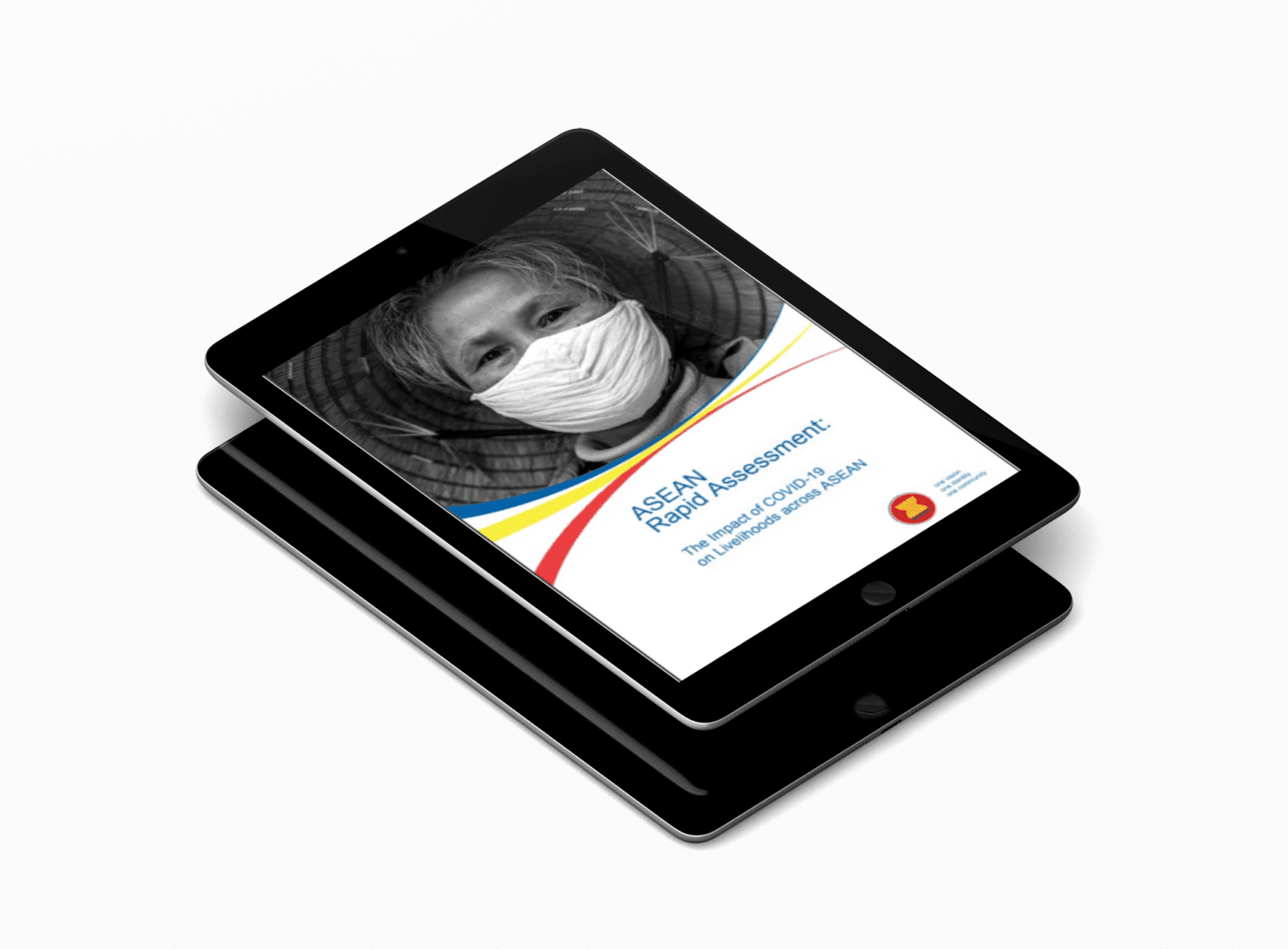In May 2020, just five months into the Covid-19 pandemic, VN Express, one of Vietnam’s online daily news sites, reported on the dramatic number of city dwellers in the country who, newly unemployed, were struggling to support themselves or their families. The paper interviewed Tran Thanh Thao, a former hotel chef, gainfully employed for 13 years before suddenly finding herself out of a job when Hanoi went into lockdown. With no tourism, even as the cities re-opened the hotel stayed closed. Unable to keep up with her rental payments, she and her two children had already moved home once and at the time she was interviewed she was struggling to access unemployment benefits.
Thao’s story is not unlike that of 34-year-old Pov Chamrong in neighboring Cambodia. When restaurants were forced to close in the capital Phnom Penh, Pov lost her long-term job as a waitress. When she was interviewed in June 2020 by the Khmer Times, Pov had no income and was struggling to buy enough food for her and her family.
Thao and Pov’s experiences echo throughout Southeast Asian cities from the early months of 2020 onward. They are members of what is increasingly being described as the “new poor”: a stratum of the economically vulnerable and lower middle class throughout Asia that rested on fragile foundations. When salaries were coming in, there was enough to live on and to support a better future for families whose earlier generations had likely lived in or on the cusp of poverty. Yet those salaries or the profits from small businesses did not necessarily provide enough for savings or social insurance payments and many millions of workers in comfortable, yet precarious, financial situations were without formal work contracts and the associated protections they afford.
For these individuals and families, the shock of Covid-19 has upended their world.
Prior to the pandemic, approximately 148.9 million people in East Asia and the Pacific lived in poverty (measured at $3.20 a day). In joining this group, the new poor herald the first significant increase in poverty the region has seen for decades. Projections of the short-term impact of Covid-19 on poverty estimate that, depending on the size of the ultimate economic contraction, an additional 133 to 274 million people globally may fall below the poverty line. Approximately 20 percent of these are estimated to be in East Asia and the Pacific. If Covid-19 also increases inequality, as many expect, the ranks of the poor will swell even further.
The pandemic has worsened an already precarious situation largely due to gaps in social protection systems. This was an important lesson from the 1997-98 and 2008-9 economic crises, when most middle-income member states (namely Indonesia, the Philippines, Vietnam, Malaysia, and Thailand) substantially expanded their social protection systems.
Drawing on those lessons, the ASEAN Secretariat, with support from The Asia Foundation and The Rockefeller Foundation, sought to assess the impact on welfare and livelihoods. The ASEAN Rapid Assessment, published earlier this month, took stock of information available in the public domain on the impact of the pandemic throughout the region over the past six to 10 months.
It found that those member states with relatively mature systems were better equipped to leverage and expand existing programs and delivery systems in order to respond to new needs. It also highlighted the importance of ensuring basic social protection for the poor and vulnerable in more “normal” times. These measures help to alleviate poverty, improve household welfare, and enable beneficiaries to better manage risk.
For policymakers, planning for future shocks means investing in shock-responsive, adaptive social protection systems that can scale up rapidly to cover those in need during a crisis and be scaled back afterward. A key feature of an adaptive social protection system is its scalability: its ability to provide more benefits to existing beneficiaries and expand its coverage to meet the needs of more people – the “new poor,” for example. Such adaptive systems require sufficient pre-crisis coverage, some design flexibility, credible and flexible financing, and comprehensive and dynamic delivery systems to be in place before a crisis hits.
Current innovations used for Covid-19 responses, particularly those that use emerging digital technologies, also provide useful lessons for dynamic social protection systems. As do ongoing high frequency phone surveys deployed in several countries to rapidly identify and understand the needs of the current and new poor. These tools need to be incorporated in regular poverty monitoring and statistical analysis.
As with many dimensions of the pandemic, the “new normal” will require new, innovative, and forward-looking policies in order to shift from containment to a recovery phase that reverses these inequalities. It requires a fundamental commitment to providing a safety net for the poor and vulnerable, social security and health insurance, and ensuring affordability of education in times of crisis. That commitment would naturally extend to the pre-COVID poor as well.
This article first appeared in The Diplomat on December 17, 2020, and is reposted with permission.
Related Updates

ASEAN Rapid Assessment: The Impact of Covid-19 on Livelihoods across ASEAN
Covid-19 has brought about unprecedented challenges and disruptions to millions of lives around the world, including in ASEAN region. Understanding the impacts of the pandemic, sharing of measures and programs among countries, and leveraging regional mechanisms are critical for the region to mitigate the socio-economic impacts and foster recovery and resilience. The Rockefeller Foundation together […]
More